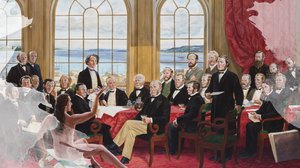Well, the federal government has said all the right things. It has said no relationship is more important to it than its relationship with Indigenous peoples. And it has said that it is a hundred percent committed to implementing UNDRIP within the Canadian constitutional framework. But we haven’t seen a great deal concrete from the federal government yet.
Any kind of process for implementing UNDRIP that doesn’t have Indigenous buy-in, and that doesn’t involve Indigenous peoples from the beginning, almost certainly isn’t going to work. It’s going to be perceived as another example of colonial paternalism—Canada deciding for itself what Indigenous people want and need. And it might very well be rejected and not be effective.
So, if UNDRIP is going to have meaningful effect, even as a feature of domestic Canadian law, it has to be incorporated into Canadian law in a way that is comfortable and acceptable to the Indigenous peoples themselves.
It seems to me that, quite apart from everything else, there are four threshold issues that there needs to be consensus about if UNDRIP implementation is actually going to happen. And the four are: The who—who are the Indigenous peoples to whom UNDRIP would apply? Second one is, what lands are we talking about? UNDRIP by its terms would presumably apply anywhere and everywhere, but there are provisions that deal specifically with lands that belong or have belonged in the past to Indigenous peoples. Third issue, I think, is the how of implementation—there are different ways in which it is possible to implement UNDRIP domestically. And they have different implications, different risks and different consequences. And the fourth is, once you’ve implemented UNDRIP, and you’ve arranged for the federal government or Canadian governments more generally to get out of the way of Indigenous communities self-determining and governing themselves, what’s the ongoing role of the Canadian government after that?
I’ve looked at the issue of UNDRIP implementation from a strategic perspective, taking into account some of the challenges mainstream governments are going to have in bringing themselves to implement UNDRIP. From that standpoint, it’s important for the Indigenous people who will benefit from UNDRIP, strategically speaking, to do what they can to remove excuses the federal government might have for deciding this is too difficult, or that it has to be postponed. Meaningful UNDRIP implementation is going to require—unfortunately, because this isn’t necessarily fair—a lot of hard work on the Indigenous side, bringing forth shared Indigenous understandings for the mainstream governments to deal with in bringing about meaningful UNDRIP implementation.


